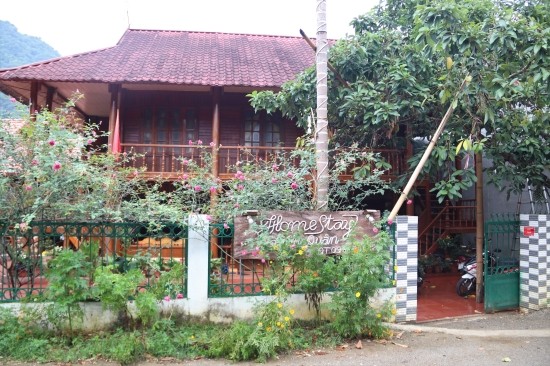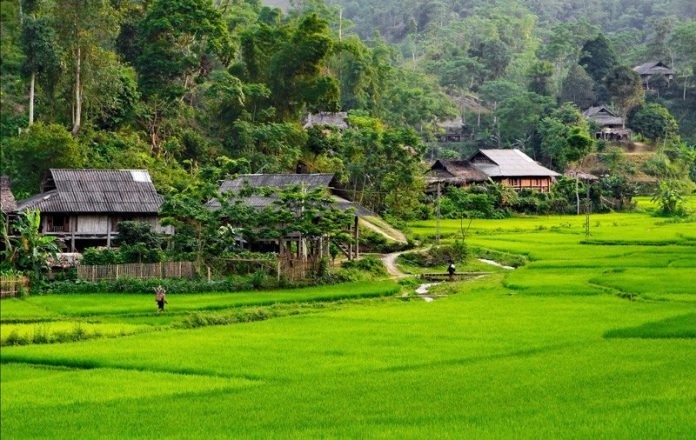(VOVWORLD) - Located 300km from the capital city of Hanoi, Son La city has a majestic natural landscape and an ideal climate, and is home to 12 ethnic groups. These are favorable conditions for Son La to develop community-based tourism.
 Tien Quan Homestay. (Photo: Thanh Thuan) Tien Quan Homestay. (Photo: Thanh Thuan) |
It only takes a few minutes for visitors to reach community-based tourism villages from Son La.
Bo hamlet, for example, is just 5km from the center of the city. It is comprised of 255 households from five ethnic groups - Thai, Muong, Kinh, Kho Mu, and Mong.
Nguyen Tien Quan, owner of the Tien Quan homestay, says his family was one of four households selected to pilot community tourism by local authorities in 2015.
One year later he retired from a state agency and was chosen to lead the model. In 2017 Quan launched his own homestay.
“At first we were like a fish out of water. As a vanguard in this locality, I had lots of difficulties. But offering homestay services has increased my family's income, enabling us to buy some items for the family and to serve the tourists,” said Quan.
”We’ve created jobs for local young people, made the village cleaner, and bought local farm produce, contributing to the local economy. Most importantly, our homestay has introduced the beauty of Bo hamlet.”
 An overview of Mong hamlet in Hua La commune. (Photo: vietnamtourism.gov.vn) An overview of Mong hamlet in Hua La commune. (Photo: vietnamtourism.gov.vn) |
Lu Thi Phuc, a native of Bo hamlet and the chef for Tien Quan Homestay, says visiting tourists can experience life in the hamlet, including local ethnic dishes.
“Thai ethnic food is special, very hot and spicy. Ginger, lemongrass, garlic, chili, and mac khen (Sichuan peppers) are combined with other spices. Chicken is cooked with lemon leaf and fish with dill. Most of the dishes of Thai ethnic people are grilled,” said Phuc.
Hum hamlet, just 3km from the city’s center, is famous for its charming landscape of rice fields, Tham Lieng cave, and the peaceful river of Nam La.
Hum hamlet still preserves intact Thai ethnic architecture, customs, and cuisine. Visitors can farm, fish, climb a mountain, or explore a cave with the locals.
5km further away is Mong hamlet, where there is a year-round hot spring with temperatures between 36 and 38 degrees Celsius and a high mineral content.
Community-based tourism has changed the lives of the local Mong people for the better. 60 households in the hamlet provide mineral bath services and two operate homestay services.
Cultural exchange is the reason homestays attract tourists. Dancing with a Thai, Meo, Muong, Mong, Lao, or Kho Mu art troupe and staying and having fun with a local family creates a memorable tourist visit.
Nguyen Thuong Ngan, a photographer with the Hanoi Adventure Tour Club, said, “I came to Son La ten years ago and have been back many times. I’m happy to see the improvement in local people's living conditions. Their cultural identity remains unchanged. They are still simple and hospitable.”
Thanks to community-based tourism many of Son La’s customs, folk games, festivals, and traditional crafts have been restored, increasing the city’s attraction even more.